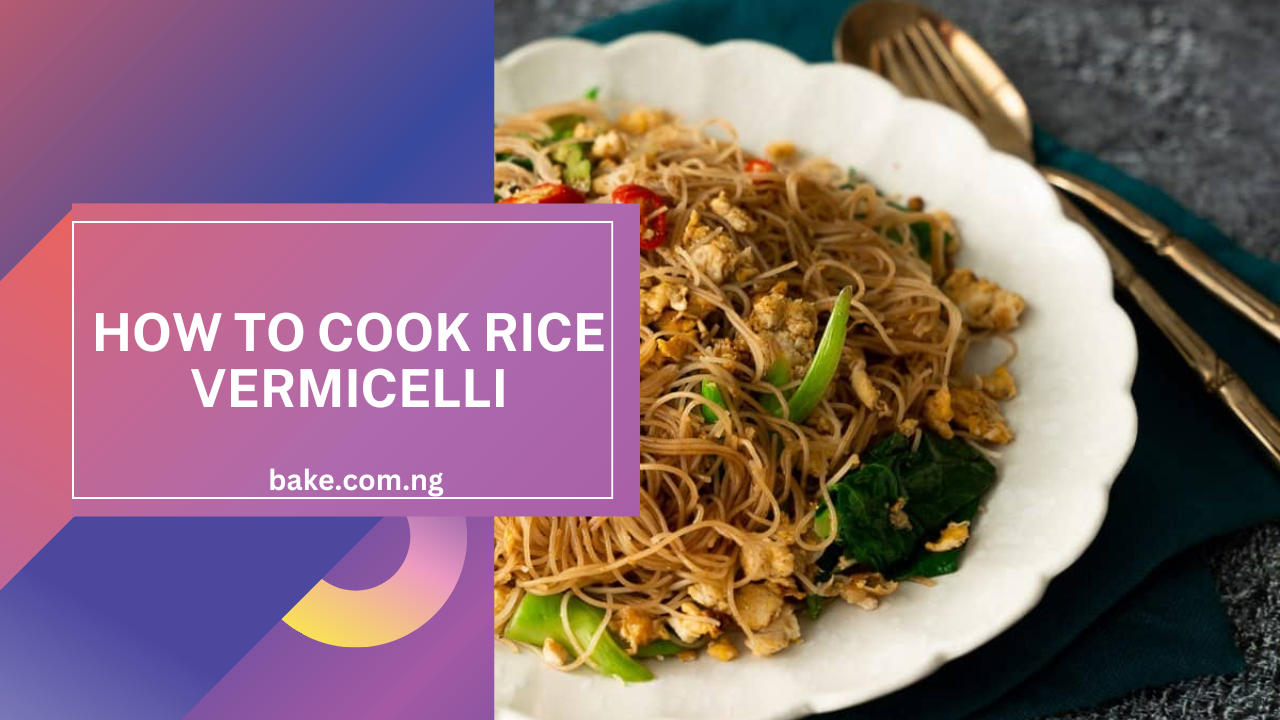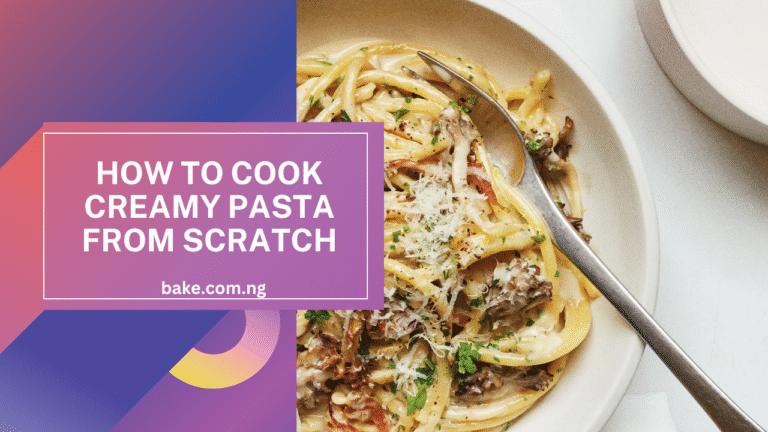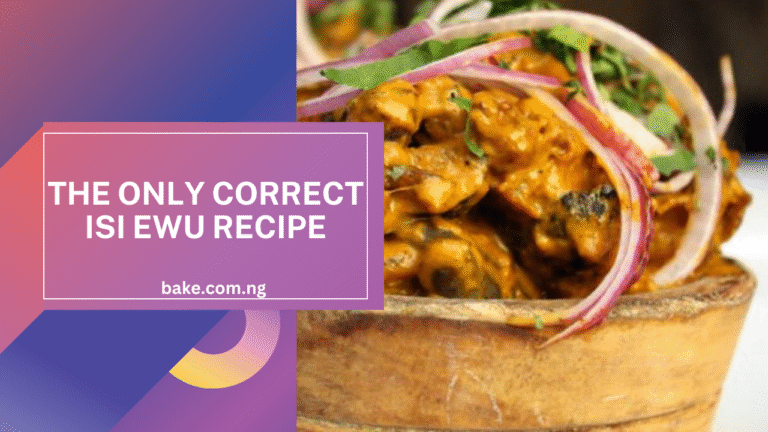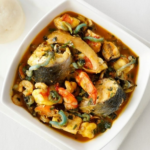Rice vermicelli, often called rice noodles or rice sticks, are thin noodles made from rice flour and water. They are a staple in many Asian cuisines, including Chinese, Thai, Vietnamese, and Filipino dishes. Whether you want to make a light salad, stir-fry, or comforting soup, rice vermicelli offers versatility and a delicate texture that absorbs flavors beautifully.
In this guide, you’ll learn how to cook rice vermicelli perfectly—from soaking to rinsing and serving. We’ll also cover a few cooking tips, common mistakes to avoid, and delicious ways to use the noodles in your meals.
What Is Rice Vermicelli?
Rice vermicelli are thin, translucent noodles made primarily from rice flour. They are different from cellophane noodles (also called glass noodles), which are made from mung bean starch. Rice vermicelli is white in color when dry and turns soft and slightly chewy when cooked.
It’s commonly used in dishes like:
- Vietnamese bún chả or spring rolls (gỏi cuốn)
- Thai pad woon sen (stir-fried noodles)
- Chinese Singapore noodles
- Filipino pancit bihon
These noodles absorb sauces and seasonings quickly, making them a perfect base for flavorful meals.
Ingredients and Tools You’ll Need
Before you begin, gather these simple items:
Ingredients:
- 200g of dried rice vermicelli (adjust based on serving size)
- Water (enough to fully submerge the noodles)
- A pinch of salt (optional)
Tools:
- A large heatproof bowl or pot
- Strainer or colander
- Tongs or chopsticks
- A large pot for boiling (if you prefer the hot water method)
Step-by-Step Guide to Cooking Rice Vermicelli
Step 1: Boil or Heat Water
Start by bringing a large pot of water to a boil. If your recipe calls for stir-frying or serving the noodles hot, boiling water works best.
If you plan to make a cold dish like a noodle salad, simply heat water until it’s very hot but not boiling.
Step 2: Soak the Noodles
Place the dried rice vermicelli in a large heatproof bowl. Pour the hot water over the noodles until they are completely submerged.
Let them soak for 5 to 10 minutes, depending on the thickness of the noodles. Stir occasionally to prevent sticking.
- Thin vermicelli (like for spring rolls): Soak for 3–5 minutes.
- Thicker vermicelli (for stir-fries or soups): Soak for 8–10 minutes.
Check the texture by tasting a strand—it should be soft but slightly firm (al dente).
Step 3: Drain and Rinse
Once the noodles reach your desired texture, pour them into a strainer to drain out the water.
Rinse immediately under cold running water to stop the cooking process and remove excess starch. This prevents the noodles from becoming mushy or sticky later.
Shake off the extra water and let the noodles rest for a few minutes to dry slightly.
Step 4: Prepare for Your Recipe
Now that your noodles are cooked, you can use them in various dishes.
If you’re making a stir-fry, drizzle a small amount of sesame oil or vegetable oil and toss gently to prevent clumping.
If you’re adding them to soup, you can drop them directly into the broth just before serving.
Common Mistakes to Avoid
- Over-soaking the noodles – They can become too soft and break apart easily. Always test a strand before deciding they’re done.
- Not rinsing after soaking – Rinsing removes starch that causes stickiness.
- Boiling instead of soaking – Unlike wheat pasta, rice vermicelli doesn’t need prolonged boiling. Soaking in hot water is usually enough.
- Leaving them uncovered after cooking – Covering them can trap steam and make them soggy. Let them breathe.
How to Use Cooked Rice Vermicelli
Rice vermicelli can be used in many dishes, both hot and cold. Here are a few ideas:
1. Stir-Fried Noodles
Toss the cooked vermicelli in a wok with vegetables, soy sauce, garlic, and your choice of protein like chicken, shrimp, or tofu.
2. Noodle Soup
Add them to a flavorful broth made with chicken, beef, or vegetables. Garnish with herbs like cilantro and basil for extra freshness.
3. Cold Noodle Salad
Combine cooled rice noodles with shredded carrots, cucumbers, mint leaves, and a tangy dressing made of lime juice, fish sauce, and sugar.
4. Spring Rolls
Wrap the noodles with vegetables, herbs, and shrimp or pork in rice paper for a light and refreshing appetizer.
5. Pancit Bihon (Filipino Style)
Stir-fry the noodles with soy sauce, oyster sauce, vegetables, and meat or seafood for a classic Filipino dish.
Storage Tips
If you’ve cooked too much, don’t worry—rice vermicelli stores well.
- In the refrigerator: Keep in an airtight container for up to 3 days. Sprinkle a little water and microwave for 30 seconds before serving.
- Avoid freezing: The texture changes and becomes crumbly when thawed.
Final Thoughts
Cooking rice vermicelli is simple once you understand the soaking process. Unlike wheat-based noodles, rice vermicelli doesn’t require boiling; soaking in hot water gives you soft, chewy strands ready for any dish.
The key is to soak just enough, rinse well, and drain properly. With these steps, you can create authentic Asian meals right in your kitchen—whether you’re craving a spicy stir-fry, a fresh salad, or a hearty soup.








